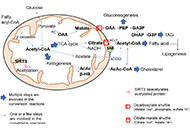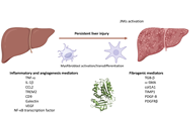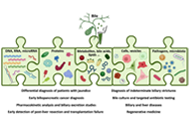Bile as a liquid biopsy matrix: potential applications and limitations
Hunting for tumoral material in body fluids, traditionally in blood, the so-called liquid biopsy is set to revolutionize the diagnosis and management of oncological patients. However, other biofluid
[...] Read more.
Hunting for tumoral material in body fluids, traditionally in blood, the so-called liquid biopsy is set to revolutionize the diagnosis and management of oncological patients. However, other biofluids can also be considered as alternative sources of biomarkers to provide clinically valuable information for multiple diseases. This is the case of bile, a fluid produced in the liver, stored in the gallbladder, and excreted to the duodenum, which complex composition is known to change in different pathological conditions. Remarkably, different works have demonstrated that the identification of mutations in bile cell-free DNA (cfDNA) can outperform blood analysis for the early diagnosis of biliopancreatic tumors causing biliary strictures. Here, the literature in which bile has been tested as a liquid biopsy matrix where lipids, metabolites, proteins, and cfDNA among other analytes were measured is reviewed. Moreover, the clinical situations and procedures where bile can be available, discussing the possible applications and limitations of bile analysis are summarized. The scientific relevance and clinical potential of bile harvesting, biobanking, and analysis are put forward. All this evidence supports the value of bile as a liquid biopsy matrix for the management of patients beyond cancer, and perhaps also beyond “blood, sweat, and tears”.
Maria Arechederra ... Carmen Berasain
Hunting for tumoral material in body fluids, traditionally in blood, the so-called liquid biopsy is set to revolutionize the diagnosis and management of oncological patients. However, other biofluids can also be considered as alternative sources of biomarkers to provide clinically valuable information for multiple diseases. This is the case of bile, a fluid produced in the liver, stored in the gallbladder, and excreted to the duodenum, which complex composition is known to change in different pathological conditions. Remarkably, different works have demonstrated that the identification of mutations in bile cell-free DNA (cfDNA) can outperform blood analysis for the early diagnosis of biliopancreatic tumors causing biliary strictures. Here, the literature in which bile has been tested as a liquid biopsy matrix where lipids, metabolites, proteins, and cfDNA among other analytes were measured is reviewed. Moreover, the clinical situations and procedures where bile can be available, discussing the possible applications and limitations of bile analysis are summarized. The scientific relevance and clinical potential of bile harvesting, biobanking, and analysis are put forward. All this evidence supports the value of bile as a liquid biopsy matrix for the management of patients beyond cancer, and perhaps also beyond “blood, sweat, and tears”.
 The central role of mitochondrial metabolism in hepatic steatosisOpen AccessReviewMitochondria are present in all mammalian cells except matured red blood cells. Mitochondria consist of several metabolic pathways for glucose, fatty acids, amino acids, and bioenergetic pathways fo [...] Read more.Sanda Win ... Filbert Win Min AungPublished: February 29, 2024 Explor Dig Dis. 2024;3:42–68
The central role of mitochondrial metabolism in hepatic steatosisOpen AccessReviewMitochondria are present in all mammalian cells except matured red blood cells. Mitochondria consist of several metabolic pathways for glucose, fatty acids, amino acids, and bioenergetic pathways fo [...] Read more.Sanda Win ... Filbert Win Min AungPublished: February 29, 2024 Explor Dig Dis. 2024;3:42–68 SERPINB3 in fibrogenic chronic liver diseases and primary liver cancersOpen AccessReviewChronic liver diseases (CLDs), which are typically characterized by fibrogenic progression towards liver cirrhosis and related complications eventually leading to organ failure and can also lead to [...] Read more.Patrizia Pontisso, Maurizio ParolaPublished: February 28, 2024 Explor Dig Dis. 2024;3:22–41
SERPINB3 in fibrogenic chronic liver diseases and primary liver cancersOpen AccessReviewChronic liver diseases (CLDs), which are typically characterized by fibrogenic progression towards liver cirrhosis and related complications eventually leading to organ failure and can also lead to [...] Read more.Patrizia Pontisso, Maurizio ParolaPublished: February 28, 2024 Explor Dig Dis. 2024;3:22–41 Bile as a liquid biopsy matrix: potential applications and limitationsOpen AccessReviewHunting for tumoral material in body fluids, traditionally in blood, the so-called liquid biopsy is set to revolutionize the diagnosis and management of oncological patients. However, other biofluid [...] Read more.Maria Arechederra ... Carmen BerasainPublished: February 04, 2024 Explor Dig Dis. 2024;3:5–21
Bile as a liquid biopsy matrix: potential applications and limitationsOpen AccessReviewHunting for tumoral material in body fluids, traditionally in blood, the so-called liquid biopsy is set to revolutionize the diagnosis and management of oncological patients. However, other biofluid [...] Read more.Maria Arechederra ... Carmen BerasainPublished: February 04, 2024 Explor Dig Dis. 2024;3:5–21 Precision medicine in chemotherapy: Is there room for advancement in colorectal cancer?Open AccessEditorialMichele GhidiniPublished: January 18, 2024 Explor Dig Dis. 2024;3:2–4
Precision medicine in chemotherapy: Is there room for advancement in colorectal cancer?Open AccessEditorialMichele GhidiniPublished: January 18, 2024 Explor Dig Dis. 2024;3:2–4 Correction: Familial achalasia isolated or syndromic: about 18 familiesOpen AccessCorrectionEditorial OfficePublished: January 11, 2024 Explor Dig Dis 2024;3:1
Correction: Familial achalasia isolated or syndromic: about 18 familiesOpen AccessCorrectionEditorial OfficePublished: January 11, 2024 Explor Dig Dis 2024;3:1